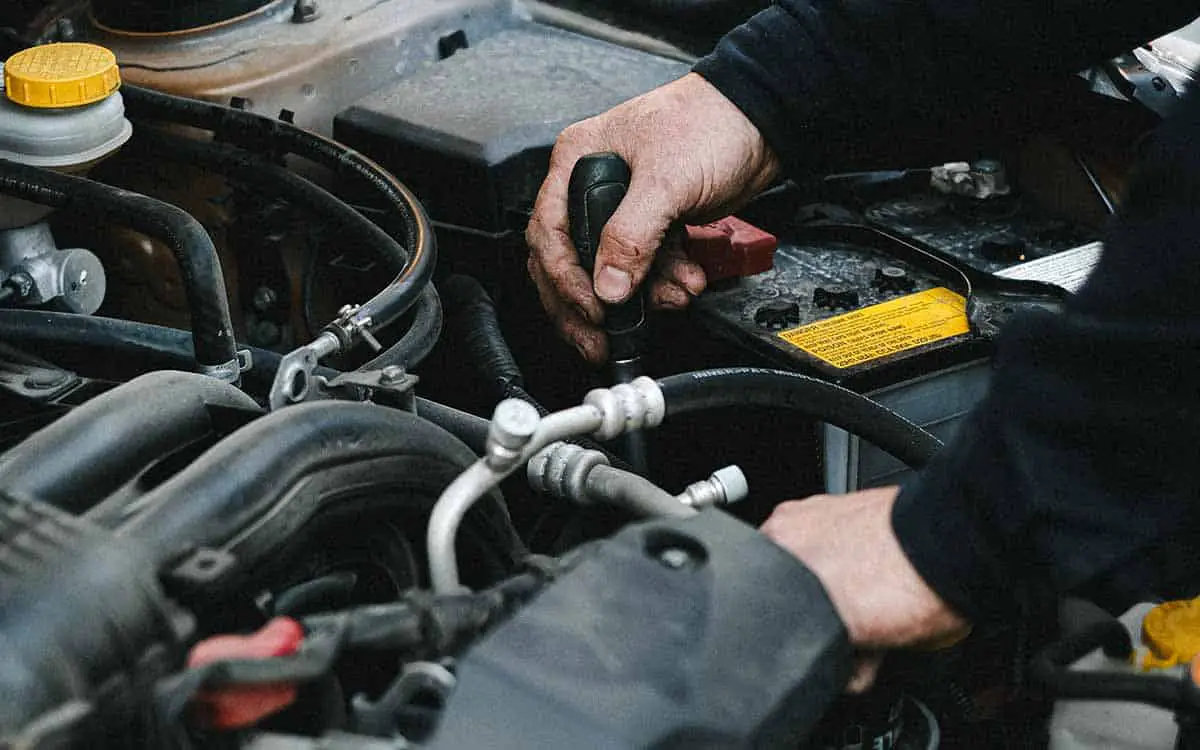If your car is leaking power steering fluid, you’re going to want to take care of the problem as soon as possible. Not only is this a safety hazard, but it can also lead to more serious problems down the road. In this step-by-step guide, we will show you how to fix a power steering hose leak. We’ll provide information on the tools and parts you’ll need, as well as the steps you need to take to get the job done. So don’t wait – fix that leak today!
Causes of power steering hose leak
Power steering is a hydraulic system that uses fluid to assist in steering the vehicle. This fluid makes turning the steering wheel much easier, and it also helps to keep the wheels in alignment. Over time, however, the power steering fluid can begin to leak out of the system.
This leak is most commonly caused by a hole or cracks in the hose. In some cases, it can also be caused by loose connections or clamps.
Also, when the system is under a lot of pressure, it can cause the hoses to wear down over time and eventually leak.
Keep reading to find out the reasons for power steering hose leak
Causes of power steering hose leak
There are a few other reasons why your power steering hose may be leaking:
– damaged or lose hose clamps
– damaged O-rings
– cracks or holes in the hose
– loose fittings
Let’s explore each one of these factors in a little more detail.
1. Damaged or loose hose clamps:
The first reason why your power steering hose may be leaking is due to damaged or loose hose clamps. Hose clamps are usually made of metal and are used to secure the hoses to the fittings, and over time they can rust, become damaged or loosen. This can cause fluid to leak out of the system. Usually a damaged hose clamp can be replaced, but if it is too damaged, you may need to replace the entire hose.
2. Damaged O-rings:
Another reason for a power steering hose leak is damaged O-rings. These are small rubber rings that are used to create a seal between the hoses and fittings. Over time, they can become dry, cracked, or damaged, which can cause fluid to leak out. A damaged o-ring is mostly a result of age and wear and tear, but it can also be damaged by chemicals such as oil or brake fluid.
3. Cracks or holes in the hose:
As with any type of hose, over time the power steering hose can develop cracks or holes. This is usually due to age, weathering, or damage from road debris. If you notice any cracks or holes in your hose, it’s important to replace the hose as soon as possible to avoid any further damage.
-Loose fittings:
The final reason why your power steering hose may be leaking is due to loose fittings. This can be caused by several things, such as wear and tear, damage, or simply age. If you notice that any of the fittings are loose, it’s important to tighten them or replace them as soon as possible.
Now that we’ve gone over some of the reasons why your power steering hose may be leaking, let’s move on to the steps you need to take to fix it.
How to determine if you have a leak
I remember driving in town one afternoon and suddenly my wheel became very hard to turn. I was confused because just that morning everything seemed fine.
When I got home and parked my car, I noticed a small puddle of red fluid under my engine. That’s when I realized that my power steering fluid was leaking! If you think you might leak your hose, here are some things to look for:
- A puddle of fluid under your car
- Hissing noise when you turn the wheel
- Steering that feels stiff or difficult
If you notice any of these things, it’s time to take action. Don’t worry – fixing a power steering hose leak is not as difficult as it may seem. With this guide, we’ll walk you through the process step-by-step.
Steps to fix a power steering hose leak
What you’ll need to fix the leak
Before you get started, there are a few things you’ll need to gather:
- Power steering fluid
- Rags or towels
- Wrench or pliers
- Screwdriver
- New hose clamps (if needed)
- New O-rings (if needed)
- Power steering hose repair kit (if needed)
Once you have all the tools and parts you need, follow these steps to fix your power steering hose leak:
1. Cleaning around the leak
Start by cleaning up the area around the leak with a rag. This will help you to see where the leak is coming from and avoid making the problem worse. Cleaning the area around the leak will also help you to avoid getting power steering fluid on yourself or your clothes.
2. locate the power steering fluid reservoir
Second, you’ll want to locate the power steering fluid reservoir. This is usually located near the front of the engine and will have a power steering fluid level indicator or a cap that says “power steering fluid” on it. Once you’ve found the reservoir, remove the cap and use a funnel to fill it up with new power steering fluid.
3. Identify the leak
Next, you’ll need to identify the leak, take a look at the power steering hose to find a hole or crack. if there is a crack or a hole in the hose you will see the fluid dripping from it but if you can’t see where the fluid is coming from, try running the engine and turning the wheel back and forth. This will help you pinpoint the location of the leak. Once you’ve found the leak, it’s time to start disassembling.
If the leak is coming from a hose, you’ll need to identify which hose it is. The three hoses that make up the power steering system are the high-pressure hose, return hose, and suction hose. The high-pressure hose carries fluid from the pump to the steering rack, the return hose carries fluid from the steering rack back to the pump, and the suction hose is used to draw fluid from the reservoir into the pump.
4. Disassembling parts
Using your socket wrench set, loosen and remove the hose clamps that are holding the power steering hose in place. Then, slide the hose off of the power steering pump and steering rack. By doing this, it will be easier for you to access the O-rings and other parts that may need to be replaced.
Now, take a look at the power steering pump. There are two ports on the pump, one for the high-pressure hose and one for the return hose. The port for the high-pressure hose will have a larger diameter than the port for the return hose.
Using your screwdriver, remove the O-rings from both ports. If the O-rings are damaged, you’ll need to replace them with new ones. You can get O-rings at any auto parts store or online.
Now, take a look at the steering rack.
Now that you’ve disassembled the parts, it’s time to start reassembling them.
5. Fix hose
Now, it’s time to replace the power steering hose (if necessary). If the hose is severely damaged or leaking in multiple places, it’s best to just replace it altogether. To do this, simply slide the new hose onto the power steering pump and steering rack, and then use your socket wrench to tighten the hose clamps.
6. Reassemble parts
Finally, reassemble everything and test your work. Start the engine and turn the wheel back and forth to make sure that the power steering fluid is flowing properly. If everything seems to be working correctly. Put the power steering fluid reservoir cap back on and check for leaks. If the leak has stopped, you’re all set!
If the leak persists, take your car to a mechanic and have them take a look. They may need to replace the power steering pump or other parts.
Conclusion
Power steering hose leak is a common problem in cars. But, it’s easy to fix if you know what you’re doing. With this step-by-step guide, you’ll be able to fix the problem in no time! Just be sure to take the necessary precautions and follow the steps carefully. With a little time and effort, you’ll have your car back on the road in no time.
I hope this guide has been helpful. Thanks for reading!
Have you ever had to fix a power steering hose leak? Share your experience in the comments below!
If not, would this guide be helpful to you if you ever found yourself in this situation? Let us know what you think!

